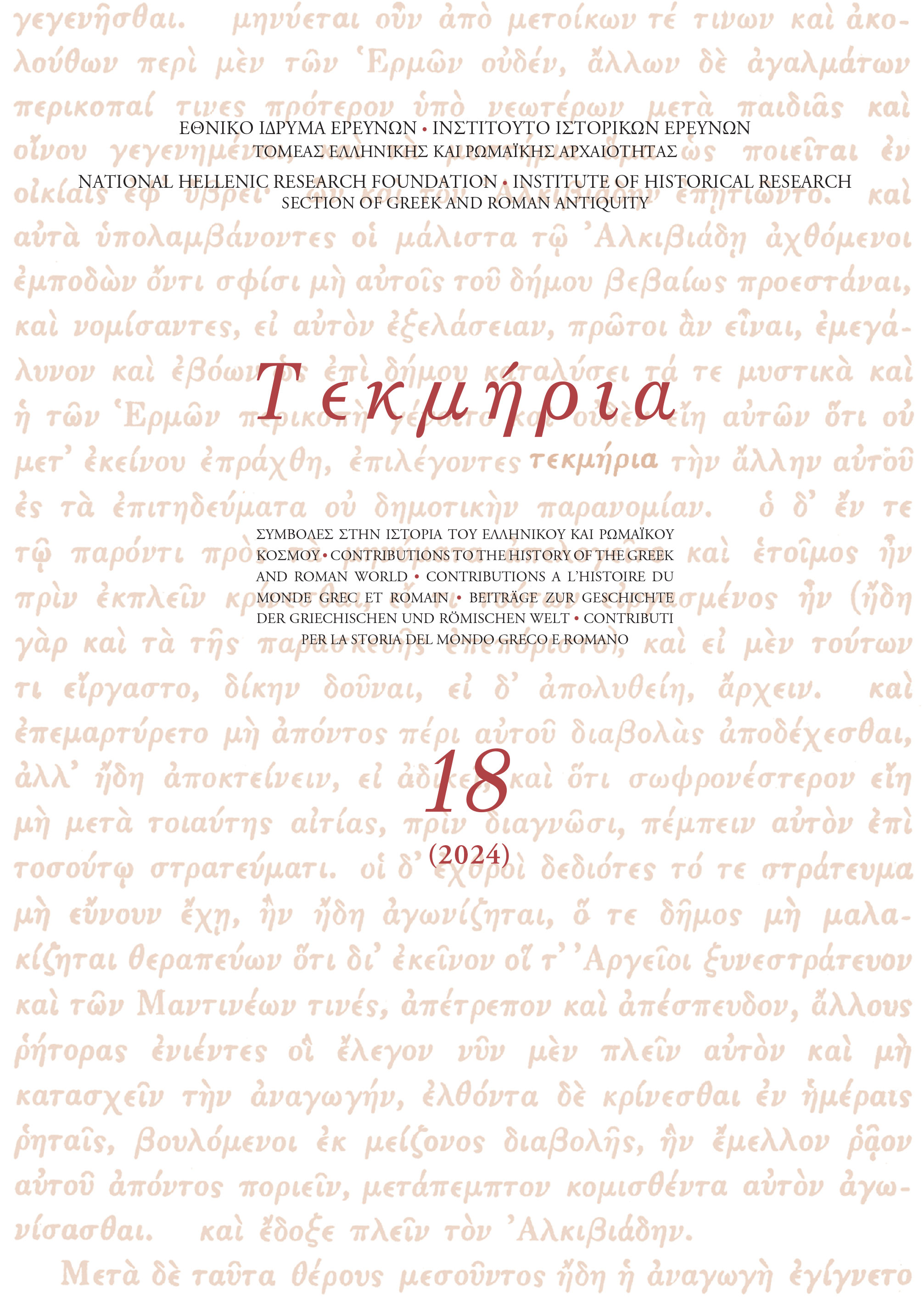Integrating Numismatic Evidence into the Study of the Urban Landscape of Paphos. From Palaepaphos to Nea Paphos with the Last King

Abstract
The discovery of a bronze coin, in the context of controlled excavations conducted by the Palaepaphos Urban Landscape Project (PULP) on the plateau of Palaepaphos-Hadjiabdoullah since 2009, presented the opportunity for a challenging collaborative dialogue on the integration of numismatic discoveries, as well as relevant inscriptions and literary sources, with the current results of the landscape analysis and the excavations that have contributed to the identification of the plateau as the citadel of the polis of Paphos in the Cypro-Classical period.
The identification of the coin as a bronze issue of either Timarchos (350? – 325? BC) or his son and last king of Paphos Nikokles (325? – 310/9 BC) leads first to an updated assessment of the state of research regarding the bronze coinage of the Paphian mint under its last fourth-century kings. The coin is then contextualised in the micro-environment of the recently located secular monument, a workshop complex, where it was found. A preliminary study of the ceramic material suggests that the workshop functioned contemporaneously with the palace, an architecturally impressive monument with which it shares the north side of the citadel.
The precarious state of the fourth-century phase of the palatial building, which suggests that it could have lost its official status before the abolition of the Paphian dynasty (an event historically dated to 310/9 BC), turns the discussion towards Nea Paphos, where five coins of the same type were also discovered during controlled excavations. It is hereby suggested that by exploiting the results of the landscape analysis conducted by PULP, in combination with the still limited archaeological evidence, the establishment of Nea Paphos can be approached from the perspective of its predecessor, the old capital of Paphos. The possibility that a fourth-century monetized society was already residing in Nea Paphos reopens the long-debated issue of its foundation
Article Details
- How to Cite
-
Iacovou, M., & Markou, E. (2023). Integrating Numismatic Evidence into the Study of the Urban Landscape of Paphos. From Palaepaphos to Nea Paphos with the Last King. Tekmeria, 18, 67–96. https://doi.org/10.12681/tekmeria.36215
- Issue
- Vol. 18 (2024)
- Section
- Articles

This work is licensed under a Creative Commons Attribution-NonCommercial-ShareAlike 4.0 International License.
Copyright
The copyright for articles in this journal is retained by the author(s), with first publication rights granted to the journal. Authors who submit articles to this journal confirm that third-party intellectual property rights are not violated in any way. By virtue of their appearance in this open access journal, articles can be used freely, with proper attribution, for educational and other non-commercial purposes. The National Hellenic Research Foundation retains the right to publish papers that appear in ΤΕΚΜΗΡΙΑ in any form, including electronic, the journal may assume in the future. It also retains the right to deposit articles published in ΤΕΚΜΗΡΙΑ in its institutional repository.
Sample attribution: Author, article title, first published in ΤΕΚΜΗΡΙΑ, Vol. No., Year, Pages.


